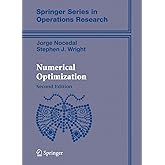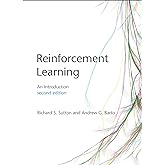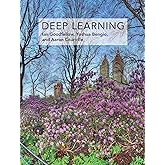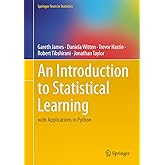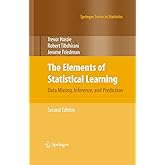
Enjoy fast, free delivery, exclusive deals, and award-winning movies & TV shows with Prime
Try Prime
and start saving today with fast, free delivery
Amazon Prime includes:
Fast, FREE Delivery is available to Prime members. To join, select "Try Amazon Prime and start saving today with Fast, FREE Delivery" below the Add to Cart button.
Amazon Prime members enjoy:- Cardmembers earn 5% Back at Amazon.com with a Prime Credit Card.
- Unlimited Free Two-Day Delivery
- Streaming of thousands of movies and TV shows with limited ads on Prime Video.
- A Kindle book to borrow for free each month - with no due dates
- Listen to over 2 million songs and hundreds of playlists
- Unlimited photo storage with anywhere access
Important: Your credit card will NOT be charged when you start your free trial or if you cancel during the trial period. If you're happy with Amazon Prime, do nothing. At the end of the free trial, your membership will automatically upgrade to a monthly membership.
Buy new:
-14% $90.54$90.54
Ships from: Amazon.com Sold by: Amazon.com
Save with Used - Very Good
$85.54$85.54
Ships from: Amazon Sold by: RockCityBooks

Download the free Kindle app and start reading Kindle books instantly on your smartphone, tablet, or computer - no Kindle device required.
Read instantly on your browser with Kindle for Web.
Using your mobile phone camera - scan the code below and download the Kindle app.

Follow the author
OK
Convex Optimization 1st Edition
Purchase options and add-ons
- ISBN-100521833787
- ISBN-13978-0521833783
- Edition1st
- PublisherCambridge University Press
- Publication dateMarch 8, 2004
- LanguageEnglish
- Dimensions9.8 x 1.5 x 7.5 inches
- Print length727 pages
Frequently bought together

Customers who viewed this item also viewed
Editorial Reviews
Review
Mathematical Methods of Operations Research
"This concisely writen book is useful in many regards: as a primary textbook for convex optimization with engineering applications or as an alternate text for a more traditional course on linear or nonlinear optimization."
Journal of the American Statistical Association, Hans-Jakob Luethi, Swiss Federal Institute of Technology Zurich
"The book by Boyd and Vandenberghe reviewed here is one of the best I have ever seen it is a gentle, but rigorous, introduction to the basic concepts and methods of the field this book is meant to be a 'first book' for the student or practitioner of optimization. However, I think that even the experienced researcher in the field has something to gain from reading this book: I have very much enjoyed the easy to follow presentation of many meaningful examples and suggestive interpretations meant to help the student's understanding penetrate beyond the surface of the formal description of the concepts and techniques. For teachers of convex optimization this book can be a gold mine of exercises."
MathSciNet
Book Description
About the Author
Lieven Vandenberghe received his PhD from the Katholieke Universiteit, Leuven, Belgium, and is a Professor of Electrical Engineering at the University of California, Los Angeles. He has published widely in the field of optimization and is the recipient of a National Science Foundation CAREER award.
Product details
- Publisher : Cambridge University Press; 1st edition (March 8, 2004)
- Language : English
- Hardcover : 727 pages
- ISBN-10 : 0521833787
- ISBN-13 : 978-0521833783
- Item Weight : 4.2 pounds
- Dimensions : 9.8 x 1.5 x 7.5 inches
- Best Sellers Rank: #323,339 in Books (See Top 100 in Books)
- #8 in Linear Programming (Books)
- #89 in Mathematics Reference (Books)
- #382 in Probability & Statistics (Books)
- Customer Reviews:
About the author

Discover more of the author’s books, see similar authors, read book recommendations and more.
Customer reviews
Customer Reviews, including Product Star Ratings help customers to learn more about the product and decide whether it is the right product for them.
To calculate the overall star rating and percentage breakdown by star, we don’t use a simple average. Instead, our system considers things like how recent a review is and if the reviewer bought the item on Amazon. It also analyzed reviews to verify trustworthiness.
Learn more how customers reviews work on AmazonCustomers say
Customers find the book concise and well-written with great explanations and examples. They describe it as a reference for convex optimization, teaching you to recognize convex problems in the wild. The content provides a solid overview and introductory theory, with examples that illustrate the applications. Readers consider it sufficient for a good initial background in statistics and machine learning.
AI-generated from the text of customer reviews
Customers find the book easy to read with clear explanations and examples. They describe it as a good, accessible introduction to training methods for data science.
"...It provides just enough theory to be able to work with problems, and just enough intuition on algorithms to know what's going on behind the..." Read more
"Quite simply, this is a wonderful text. Coupling this with Boyd's course at Stanford..." Read more
"...The reading of this book is pure joy. I found all chapters easy to follow (whatever you needed was in the book, no need to look elsewhere) except..." Read more
"...Very lucid, clear chapters. I read it cover to cover, and keeping returning to it for refreshers and new insights." Read more
Customers find the book useful for learning convex optimization. They say it's a reference and field manual for learning to recognize convex problems in the wild.
"...This book is a field manual for learning to recognize convex problems "in the wild": meaning, given an optimization problem, how do we make it..." Read more
"...attempts to do, and does very well in my opinion, is to teach you to recognize convexity that's present in problems that are first glance appear to..." Read more
"This book is great! The writers tend to capture the theory of convex optimization in a concise way and further illustrate it by showing their..." Read more
"...a well thought book and, moreover, there are the Convex Optimization course available in Youtube...." Read more
Customers find the book provides a clear overview of theory with examples. They say it's a good introduction for statistics and machine learning, providing a good initial background.
"...what I have seen so far, I believe this text alone is sufficient for a good initial background to do statistics & machine learning research...." Read more
"...of convex optimization in a concise way and further illustrate it by showing their applications. The book also has a rigorous set of exercises." Read more
"...It's simple with many examples and figures. Excellent choice for engineers, mathematicians might find it incomplete, but what can we do, that's life...." Read more
"Great explanations and examples. Can skip the very technical sections and it still reads well...." Read more
Top reviews from the United States
There was a problem filtering reviews right now. Please try again later.
- Reviewed in the United States on February 22, 2024This review is written from the perspective of a mathematically capable outsider to the field of Operations Research and Optimization that does research in statistics & machine learning. I have found that it's very difficult to figure out how to self-study these topics in general, so I'm going to include context & other resources I have found useful to highlight the importance and quality of this book. In my opinion, the landscape of OR and Optimization have to be understood to really appreciate it.
When I initially picked up Boyd & Vanderberghe, I got very frustrated with it. I would recommend going through introductory optimization material first (I went through "Managerial Decision Modeling with Spreadsheets" by Balakrishnan et al, which is excellent), and be comfortable with the basics of linear algebra and calculus, otherwise this book will seem more inaccessible than it actually is. I have also heard that Stephen Boyd's lectures on YouTube are an excellent supplement to the book and make the introduction far more gentle.
This book is a field manual for learning to recognize convex problems "in the wild": meaning, given an optimization problem, how do we make it easier to solve by making one or more parts of the problem convex? This process is known as "convex relaxation" and is one of the fundamental skills required for research in topics like statistics & machine learning, and probably many other fields as well. Because of this focus, the book strikes a very important middle ground between the highly applied side of case studies and model building, and the highly theoretical side of algorithms and convex analysis. It provides just enough theory to be able to work with problems, and just enough intuition on algorithms to know what's going on behind the scenes.
I don't know why, but most treatments I have seen of Optimization/Operations Research is presented with too much of a focus on either theory/algorithms, or case studies with barely any focus on the former. After reading this text and doing the exercises (for which the solutions are freely available online), the reader can expect to be able to formulate optimization problems, relax those problems to be more easily solvable, input the problems to an optimization solver like CVX (Matlab) or CVXPY (CVX, but in Python) and have an idea of what algorithms the solver will use to solve the problem.
From what I have seen so far, I believe this text alone is sufficient for a good initial background to do statistics & machine learning research. However, I don't believe it's enough for people who want to focus on the difficulties of Operations Research model building, writing optimization algorithms, or on theoretical topics like existence of solutions, convergence proofs for algorithms, etc.
For discussion on the challenges associated with building big optimization models, I recommend H. Paul Williams's "Model Building in Mathematical Programming" (2013)--multiple real-world problems, their model formulations, and solutions are presented, and it's just amazing practice for a budding analyst. I think the introductory chapters are definitely lacking though, and I recommend picking up "Managerial Decision Modeling with Spreadsheets", as I mentioned above.
For learning how to write numerical optimization algorithms, it is hard to go wrong with Nocedal's and Wright's "Numerical Optimization" (2006). The presentation is, like this book, crystal clear, but again requires the reader to have a good grasp on the basics of optimization, linear algebra, and calculus. The entire focus of the book is on algorithms to solve various optimization problems (not just convex problems!), but because of its age, it will not contain material on some of the newer algorithms that have found use. I would recommend looking through (free) online courses such as Ryan Tibshirani's "Machine Learning 10-725", Stephen Boyd's EE364A/EE364B sequence, and Emmanuel Candes's Math 301.
Unfortunately, I am not the right person to ask for book recommendations to learn the theory, but I have heard good things about books by Nesterov, Bertsekas, and Rockafellar. These are books that really demand the reader to have a background in mathematical analysis. From my limited searching, Bertsekas's books have solution manuals, have good geometric descriptions of the concepts, and are self-contained. The books "Convex Optimization Theory" (2009), "Convex Optimization Algorithms" (2015), and "Convex Analysis & Optimization" (2003) in particular might be a good place to start.
- Reviewed in the United States on May 30, 2008Quite simply, this is a wonderful text. Coupling this with Boyd's course at Stanford (the lecture videos, HWs, etc. are all available for free online), you're bound to learn quite a lot about optimization. But most importantly, you'll have an idea of when you can actually apply convex optimization to solve a problem that comes up in your particular field.
My reasoning in giving it such praise is my preference for the rather unusual methodology it takes in introducing you to optimization. Most books I have seen on linear programming or non-linear programming tackle a few standard problems, introduce what is necessary in terms of definitions and proofs, and then focus on the algorithms that solve these standard problems (conjugate gradient et. al.), how they work, their pitfalls, etc. While this is undoubtedly useful material (which Boyd does cover for a good deal in the final chapters), the simple fact of the matter is these algorithms are available as standard methods in optimization packages (which are abstracted from the user), and unless you are actually going into developing, implementing and tweaking algorithms, this quite honestly is useless.
What this book attempts to do, and does very well in my opinion, is to teach you to recognize convexity that's present in problems that are first glance appear to be so incredibly removed from optimization that you might never consider it. This book spends the first 100 pages or so just devoted to building a "calculus" of convexity, if you will, so that you know through what operations convexity is preserved, and you develop intuition as to the potential to use convex optimization in problems in your particular field or application. As such, the first part of the books is focused on building up the skill set, the second part to applications of convex programming, and only the third to the actual algorithms.
A word of warning: some of the explanations (especially in Chapter 4 which focuses on types of convex programs and equivalence of programs) are very general, which won't be satisfying to certain readers who need solid examples to reinforce the concepts. Also, a lot of the material can be quite challenging, requiring a bit of mental gymnastics. However, if you are accompanying your study with the problems at the end of each chapter, you're certain to get practice and demystify the concepts.
In sum, all things considered, a great text.
- Reviewed in the United States on August 19, 2019I just finished the reading of the entire book, and I feel that I am blessed that I have done this! The reading of this book is pure joy. I found all chapters easy to follow (whatever you needed was in the book, no need to look elsewhere) except possible Chapter 7 (statistical estimation). I found Chapter 10 and the 2nd half of chapter 11 the most difficult to read, but persistence will reward you. This book does not only teaches you Convex Optimization, but it also teaches you Matrix Analysis what-u-need-to-know, and after going through the examples, one gains enough knowledge about Matrix analysis to be able to apply it. There is also a free solution manual for the exercises of the book that someone should have handy because many exercises expand on the understanding of the concepts.
- Reviewed in the United States on June 26, 2024I've spoken with Dr. Stephen Boyd. Very nice man and very helpful instructor. I'm taking a free-online course to supplement this text and get a better understanding. There are other optimization books and techniques, and this one is a good as any. Also, there are some Matlab tools that can be downloaded for free to use with this book. Highly recommend.
- Reviewed in the United States on January 11, 2021If you are a researcher or engineer in the field of optimization, you must read this book and have it on your desk at all times. Very lucid, clear chapters. I read it cover to cover, and keeping returning to it for refreshers and new insights.
- Reviewed in the United States on January 20, 2014This material is somewhat tangential to my research, but I learned a ton by reading it. Very well organized.
For example, here is a problem I was working on. For a given matrix A, find vectors a and b such that
1. |A| <= ab^T, (outer product) and
2. a^Tb (inner product) is a minimum. Convex Optimization showed me how to convert this into a CO problem
Top reviews from other countries
 dyqReviewed in Canada on March 20, 2022
dyqReviewed in Canada on March 20, 20225.0 out of 5 stars Perfect
I was afraid it might be an international version as others reviewed, but it was not. Glad to buy it on sale.
 ImmoReviewed in Germany on February 16, 2020
ImmoReviewed in Germany on February 16, 20205.0 out of 5 stars rock solid intro to convex optimization
this book is a very good monograph on convex optimization, which i would recomend anyone who only wants to read one book on the topic. contains theory and some of the most important aspects of algorithms for convex optimization problems.
 Rahul MadhavanReviewed in India on September 15, 2019
Rahul MadhavanReviewed in India on September 15, 20195.0 out of 5 stars Boyd is a wonderful teacher
As you begin your journey into machine learning, understand that the algorithms that you use stand on very firm ground, mostly in optimization. Most optimization problems can in general be thought of as solution finding in some Rn. Now turns out in certain classes of optimization, we can find some form of global optimum, and this class is the class of convex sets.
Optimization is used everywhere, and all of us have used it already. A simple thing like f'(x) =0 is something that we have already used from school days. But the problem is twofold. Recognizing that a function in convex, for a general f, and then trying to solve f' = 0 in cases where f is not conducive to exact solutions.
--
This is a great first book for someone looking to enter the world of machine learning through optimization. This is another approach apart the statistical side (which is well covered in ESL by Hastie and Tibshiriani). Several fundamental things in machine learning like SVMs and gradient descent are based on the concepts learnt from optimization.
One of the strengths of this book is that it doesn't jump into the solution methods or how to solve such problems until the problem is well understood. Spending more time in the problem space than the solution space let's the reader know why and when to apply the solutions suggested. The algorithms form the third (and last) part of the book. In a book like Fletcher, newtons method would be in the first chapter after the introduction. This approach too aids the new entrant to the field.
I find this book a slightly easier read than the one by Bersetkas. That could be a good second book, before you move on to other topics based on your interest. If you are interested in finding solutions in Rn for general cases of f (say non convex), core optimization books like Luenberger or Fletcher may be recommendable, especially for numerical optimization enthusiasts. But these are only appreciated after a first pass through the subject. Nocedal and Wright is a wonderful book for someone with exposure to optimization.
--
As always I find the prints from Cambridge Press extremely readable and a pleasure to hold. I would recommend buying this book even though you may get online prints.
--
Problems in this book are hard. You may have to struggle a bit to solve the problems completely. This might affect your choice of whether to use this book as a textbook for convex optimization.
--
*Important*: Supplement the book by the highly recommended set of video lectures by the same Author (Boyd) on convex optimization available online. His conversational tone, and casual dropping of profound statements makes the video lectures some of the best I have seen.
--
Prerequisites: To appreciate the book, you need to have understood linear algebra (say atleast at level of Strang) as well as calculus (Joydeep Dutta recommended for this)
--
Overall:
Recommended book in the library of every machine learning enthusiast. Not a must have, but almost there.
-
 Celtic boyReviewed in Japan on October 12, 2019
Celtic boyReviewed in Japan on October 12, 20195.0 out of 5 stars 読めば読むほど面白くなる一冊
self-containedの一冊.世界から評価されている安心の一冊.
読者は気力のあるもののみ.その他は拒む.
普通例示は一般化された概念に対して具体的な例を挙げて理解を補うものであるが,この本に限っては例示で付随した性質,定理が学べるため,とても重要な役割になっている.実際に数理最適化の研究で必要な定理を証明していることもあるので,例を飛ばして読むのはかなり勿体無い気がする.よって,例が難しく感じるのは自然なことだと思う.
1周で終わらせることはできないので,何度も読む本.無限のスルメ本ともいえる.
-
 FrancescoReviewed in Italy on February 20, 2017
FrancescoReviewed in Italy on February 20, 20175.0 out of 5 stars Ottimo libro
Una pietra miliare nel campo di convex optimization, argomenti trattati estensivamente e con estrema chiarezza. Ottimo per studenti di ingegneria. Non si può non avere nella propria biblioteca





